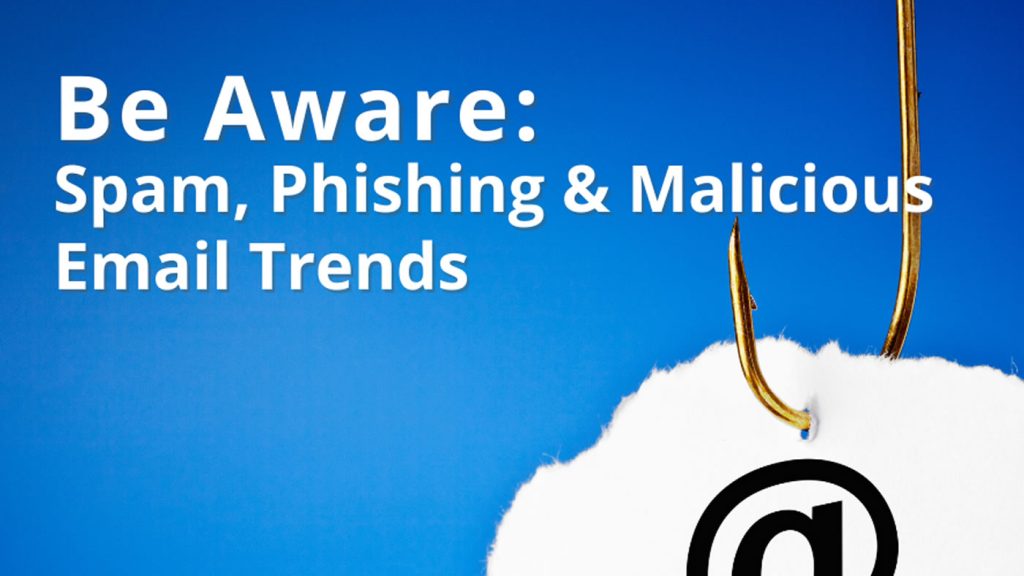
We are all fed up with spam emails and it is reported that 80 to 90% of all emails on the internet is spam. Most of us automatically delete what we consider to be spam, but the senders are becoming more and more devious in getting us to interact with them. Any form of such interaction can result in the receiver of the spam unwittingly disclosing personal information, clients´ information or the installation of malware.
How to recognise potentially dangerous emails
Emails often ask you to click on links to Login or to update user data or to sing in immediately. Any of these types of emails should be treated as suspicious and you should proceed with caution.
To check if this is a genuine email, or a phishing exercise, hover over the link (without clicking) and the link address will appear in the bottom of your window. If, for example, the email is supposed to be from PayPal, the link would show as https://www.paypal.com/*** or if from your bank the link would be https://www.bankname.com/*** (The “s” after the http shows that the site is secure and I have discussed the importance of this in a previous blog (“What is SSL?”).
If the link is something completely different, then you will know that this is a phishing link that you should not follow as the sender is probably trying to steal your personal or your company`s data; so, do NOT follow this link.
Emails with suspicious attachments
You should never open attachments or files unless you know the sender and were expecting such documents from them. Malicious files are usually in a .dox or .zip format and may contain a disguised program that could damage or steal your data.
You should never open .exe files as they are “executable” files that can run a program and it is advisable to block these types of emails as a matter of course.
Check the sender’s email address
A genuine email from a company will have the exact same details as the company. For example, a company called Templeton will have emails for templeton but a phishing email will be templetan and so easily overlooked by an innocent receiver.
In Outlook, hover over the “From” address and view the full details of the sender and confirm the actual email address.
Threatening emails
Emails that demand any urgent action with a loss of opportunity, or negative consequences, are often phishing emails. This approach intends the recipient to rush into action before checking the email for mistakes or discrepancies.
Emails with promise!
The old saying “too good to be true” is usually correct when emails encourage the recipient to click on a link or open an attachment to claim some sort of reward, this is more likely to be a phishing email.
Generic salutations
Legitimate senders will usually have and use your last and first names, even when you use an info@ or admin@address. Phishers will not have these details so will address the mail with “Dear Customer” or “Sir/Madan”, so these are easy to spot and best to avoid opening.
Emails with bad smelling and grammar mistakes
Yes, the “smelling” was deliberate but phishing emails often contain bad spelling and or grammar mistakes and is probably one of the easiest to spot. An email from a legitimate company should be well written and presented.
We all agree that spam is irritating and time-wasting and can do some very serious damage. Nevertheless, these attacks require some form of interaction by us for the sender to succeed which can result in unwittingly disclosing our business or personal information or inadvertently installing malware. Therefore, we must all take the responsibility to keep our guard up and be vigilant. We can all prevent becoming a victim by refusing to click any suspicious links or attachments and following the above points of advice.
If you would like any advice on any of the above, you can request a FREE CONSULTATION with Brent Davenport by clicking on the link below:- Click Here To Book A 30 Minute Consultation Free Of Charge